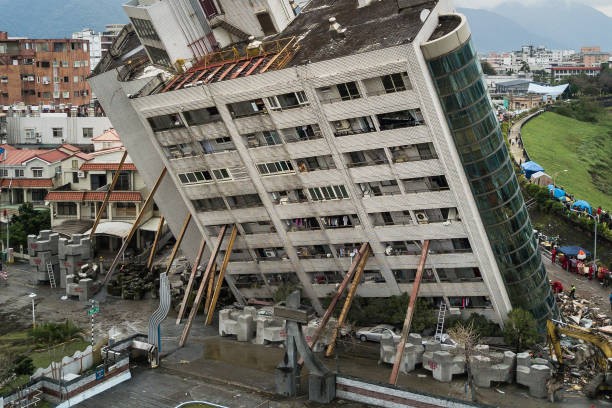A recent study has recognized a powerful correlation between changes in the seismicity rate of Taiwan and its seasonal fluctuations in the water cycle, suggesting that many faults in this area are so pressured that even little shifts in strain brought about by changes in the storage of groundwater can provoke earthquakes.

The Seismicity Rate of Western Taiwan
Ya-Ju Hsu and colleagues made an observation that the seismicity rate of western Taiwan gets to its highest levels between February and April, when there are rebounds in the crust as stress from the groundwater load reduces, and its seismicity gets to its lowest levels between July and September, at the tail end of rainstorm season.
However, the experts also noticed that earthquakes that are shallow in eastern Taiwan exhibit the opposite correlation as there is relief in the loading from stored water, a phenomenon that the authors propose might be explained by another yet-to-be-determined process dependent on time.
While former research has revealed that seismicity may seasonally fluctuate because of the shifting presence of water in regions of tectonic activity, it has stayed challenging to isolate how different physical factors support the triggering of earthquakes.
Seasonal Fluctuations in the Water Cycle
To improve this research, Hsu et al. weighed the relationship between water cycle seasonal fluctuations and earthquakes in eastern and western Taiwan, which they picked due to its constant, destroying earthquakes and its extensive fluctuations in precipitation and groundwater storage because of the typhoons and monsoons that hit the island from May to September.
The researchers made an analysis of the seismicity data from 2002 to 2018, constant measurements of groundwater from 40 monitoring stations during the same period of time, and Global Navigation Satellite System (GNSS) time-series data on seasonal water storage difference.
The Rate of Peak Seismicity
They discovered that earthquakes that are shallow happened more often in late winter and early spring in western Taiwan, when water loads put minimal stress on the crust, while a more difficult pattern surfaced in eastern Taiwan, with the rate of peak seismicity occurring in either summer or winter.
In addition, Hsu et al. examine the seasons between 1604 and 2018, during which 63 earthquake incidents of magnitude 6 or greater took place, showing historic trends in peak seismicity similar to those analyzed in the present day. These discoveries offer perceptions that may assist in improving regional hazard assessments, the authors say.

Past Earthquake in Taiwan
On September 21, 1999, an earthquake that killed over 2,400 people, destroyed thousands of buildings, and rendered an estimated 100,000 people homeless occurred in Taiwan. It was the worst earthquake to happen in Taiwan - where quakes are frequent because of its location in a seismically active zone of the Pacific basin - since a 1935 tremor that claimed the lives of over 3,200 people.
The disaster (which became locally known as the 921 earthquakes, because it took place on September 21) caused economic losses of billions of dollars.
Related Articles : 20,000 Swarms of Earthquakes Could Cause Volcanic Eruptions in Iceland, Experts Say
For more news, updates about earthquakes and similar topics don't forget to follow Nature World News!
© 2026 NatureWorldNews.com All rights reserved. Do not reproduce without permission.





